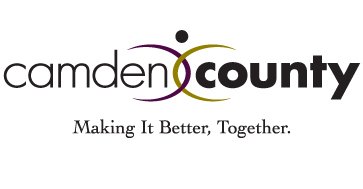 You’ve probably heard of ozone that’s high up the atmosphere – that form of ozone protects Earth from the sun’s damaging ultraviolet light. But ozone that exists at ground level (sometimes referred to as ‘smog’) is harmful to both public health and the environment – it is a lung irritant and causes damage to plants and some building materials.
You’ve probably heard of ozone that’s high up the atmosphere – that form of ozone protects Earth from the sun’s damaging ultraviolet light. But ozone that exists at ground level (sometimes referred to as ‘smog’) is harmful to both public health and the environment – it is a lung irritant and causes damage to plants and some building materials.
Ground-level ozone is a summertime phenomenon – it is created on hot summer days when sunlight and heat cause certain air pollutants to react in the air. The most significant contributors to ozone are pollutants that are emitted from burning fossil fuels – like gasoline, oil and natural gas in cars, trucks, lawnmowers, and power plants – and from some commonly used consumer products – like paints and varnishes.
Ozone is not just an environmental issue – it’s an economic issue. Because New Jersey air does not meet the USEPA’s standard for ozone, businesses and power plants that want to come to New Jersey, as well as our existing businesses and power plants that want to do a major expansion, have to buy expensive air pollution credits (‘offsets’) to ensure that their operations do not worsen our ozone levels. Helping the State meet the ozone standard will make New Jersey more attractive to growing businesses.
During this ozone season, please help improve ozone levels in New Jersey by reducing the air pollutants associated with your day-to-day work. Below are some easy tips for doing just that:
Tips for Reducing Ozone Formation
Be informed on local air quality and the air pollution reduction services available in your area: o Subscribe to EnviroFlash at http://www.enviroflash.info/signup.cfm to receive information on your local air quality. These forecasts will help your community to take the necessary precautions when ozone is predicted to be unhealthy (e.g., high ozone days). Your mobile weather app will also tell you the Air Quality Index.
o Coordinate with your applicable Transportation Management Associations (TMAs). To find out which TMA your area is affiliated with, go to
http://www.state.nj.us/transportation/commuter/rideshare/tma.shtm.
o AirNow.gov is another great resource to find out about air quality in your area.
- Turn off that engine!
o Minimize idling of your vehicles and equipment, which wastes fuel. Ten seconds of idling wastes more fuel than turning a vehicle’s engine off and on. This will also save you money on your gas bill!
- Maintain a top-rate, energy efficient fleet.
o Keep vehicle tires properly inflated to increase your gas mileage, thereby reducing the amount of smog-forming pollutants emitted from your engine.
o Keep vehicles and heavy equipment properly tuned to increase engine efficiency, thereby reducing emissions of smog-forming pollutants.
o Make sure to get vehicles inspected on schedule.
- Be smart at the fuel pump.
o When refueling vehicles, stop at the click (when the nozzle clicks off) and don’t overfill or drip fuel.
o Tighten gas caps securely.
o Refuel vehicles and equipment in the late afternoon or after dark to reduce evaporative ozone forming pollutants.
- Develop good driving habits.
o Combine errands and trips in the vehicle to reduce “cold starts”.
o Maintain the speed limit.
o Choose a cleaner commute — car pool, use public transportation, bike or walk when possible.
- Raise your thermostat.
o Keep the thermostat at a reasonable temperature in the summer, and use timed thermostats that increase the temperature even further when cooling isn’t needed. This reduces the load on power plants to keep up with demand, thereby reducing the amount of ozone-forming pollutants they emit.
- Reschedule grounds keeping and maintenance activities:
o Minimize grounds keeping work that involves power equipment (mowing, edging, mulching, and trimming) on high ozone days, or reschedule that work to take place on good air quality days. o Check labels on paints and cleaning products and buy no- or low- VOC products when possible. o Use water-based paints and cleaning products instead of solvent-based ones where possible. If you have to use solvent-based products, limit their use to after dark.
o If you periodically test emergency generators, do the testing on good air quality days or during off-peak hours to the extent possible (i.e. early evening).
